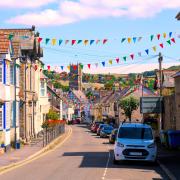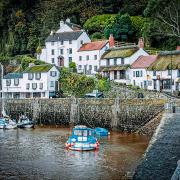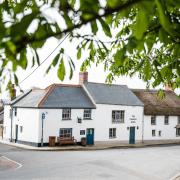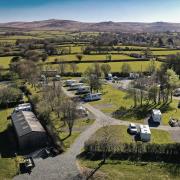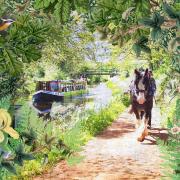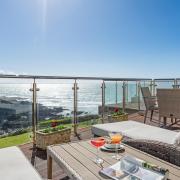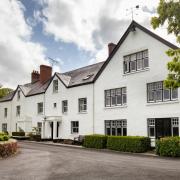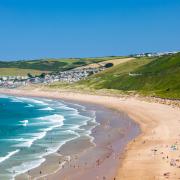Plympton St Maurice must be one of Devon’s best kept secrets. The quaint conservation village is complete with a siege mound and castle. Its illustrious history dates back to Saxon times and much of it is still obvious today in the existing higgledy-piggledy houses and glorious gardens.
Famous painters, inventors, doctors, vicars and MPs are all linked with the small village and each one has gone on to make an important historical impact on the nation. Add in some lovely architecture and you have a very rare and special place.
The castle green has been the setting for activities in the village for hundreds of years. It stands beneath the castle built in the 12th century by the second Earl of Devon. Undoubtedly the scene of battles over the years, the green has also been at the heart of much merrymaking. In 1807 an early St Maurice Festival advertises wrestling for a purse of guineas, cudgel playing for a silver cup, a jingling match (whatever that might be) as well as ‘Grinning, Bobbing and Diving – along with Other Innocent Amusements Providing Fun and Merriment’.

The old grammar school in the village could be known as the cradle of British art – and with good reason. Apart from Sir Joshua Reynolds, who became mayor of Plympton in 1773, the village has spawned other famous artists.
Charles Lock Eastlake went to Reynolds’ school in St Maurice and later became president of the Royal Academy and the first director of the National Gallery.
Benjamin Haydon, head boy of the same school, became a leading figure in 19th century art and others, like James Northcote, followed.
As well as artistic links, St Maurice is associated with other influential figures in history. For over 500 years the village sent MPs to Westminster, including Sir Christopher Wren, the designer of London’s St Paul’s cathedral (he’s now buried there next to Sir Joshua Reynolds). Retired MP and ex-foreign secretary Sir David Owen grew up in Plympton St Maurice.

In the 12th century, Plympton was far bigger than Plymouth. It coped with the ‘tin rush’ from Dartmoor and was one of four assaying centres in Devon to weigh, stamp and collect tin duties.
Later, John Sparke left the safety of St Maurice to join John Hawkins and explore the Spanish Main. He kept an account of his voyage and was the first person to ever describe tobacco and the potato.
The local Mudge brothers would later make quite an impact. Dr John Mudge, who also lived in the village, fathered 20 children but still found time to treat London’s Dr Johnson - he who wrote the dictionary. Mudge also made huge strides in treating smallpox. Thomas Mudge, a St Maurice resident, was an inventor and clockmaker, creating the first accurate marine chronometer in the 1770s, enabling seamen to calculate their position at sea.

There’s a siege mound that can be seen in the grounds of Plympton House today, a reminder of the battles that took place in the village. During the civil war in 1663 the village was the headquarters of the Royalists in Devon.
Plympton House, built for the Lord Chief Justice of England in the late 16th century is a spectacular building. It has gardens that were developed from earlier Tudor parklands and carp ponds.
The history is still living today. Behind the ancient houses there are beautiful and unusual gardens of every shape and size. Vegetable beds from medieval times still provide produce and objects from bygone animal husbandry can still be seen. Resourceful owners have turned pig troughs into abundant flower containers! No surprise the village won a Golden Guilt at the Britain in Bloom last year.
Many areas in the village are fine examples of classic Saxon strip gardens. Walk through some of the 13th century houses to get to the gardens. They show Saxon husbandry where gardens were on one side of the stream and animals on the other.

Walk down the flower-clad Fore Street and note some of the wonderful buildings. The Guildhall, on site since the 13th century, has long been the centre of village life and at one time was the civil court, complete with cells, stocks and a ducking stool by the moat of the castle. The moat still exists, dry now and used as allotments. The Cage, one of the pilloried arcade houses, was once the village lock-up and next door the Pent House was stayed in by William IV when he was the Duke of Clarence attending a ball at the Guildhall.
Meander down the side of Mayoralty House, next to the dog grooming shop. It was once the home of the local fire chief. The back is decorated with tiles and pebbles and shells brought up from Wembury beach by horse and cart. The nursing home was once a brewery – the toilet was upstream at the end of a garden and the contents flowed down to where the beer was made…
So if you’re around the St Maurice area - it’s about six miles east of Plymouth - come and share the secrets of a Devonshire gem that tourism has forgotten. You’ll find enough history to provide research for a lifetime.
Channel 4 Time Team made a fascinating programme about Plympton St Maurice. You can find this on YouTube SO6EP05 Time Team.




